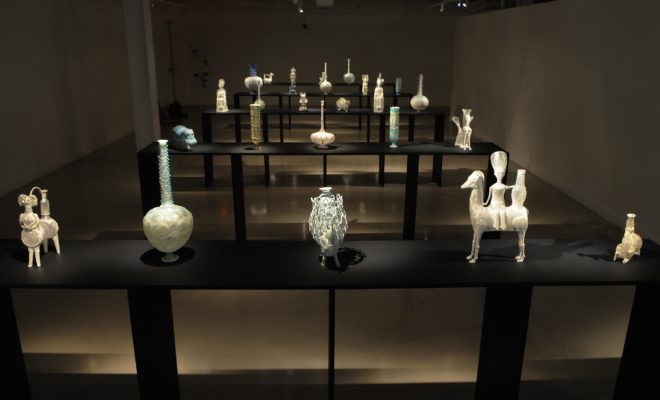 ALL IMAGES COURTESY OF URBANGLASS; NILS D'AULAIRE PHOTO
ALL IMAGES COURTESY OF URBANGLASS; NILS D'AULAIRE PHOTO
Exhibition
Shari Mendelson at UrbanGlass
At first glance, it’s surprisingly difficult to distinguish between what is ancient and what is modern in Shari Mendelson: Glasslike, curated by Elizabeth Essner, on view at UrbanGlass in downtown Brooklyn. Installed in rows and dramatically lit with spotlights, Mendelson’s works take on the guise of antique votives, calling to mind the solemn grandeur of the works on display at the Metropolitan Museum’s Greek and Roman galleries. But closer inspection reveals that, despite their illusory appearance, the objects are made from salvaged plastic, with “sell-by” dates standing in for stamped accession numbers.
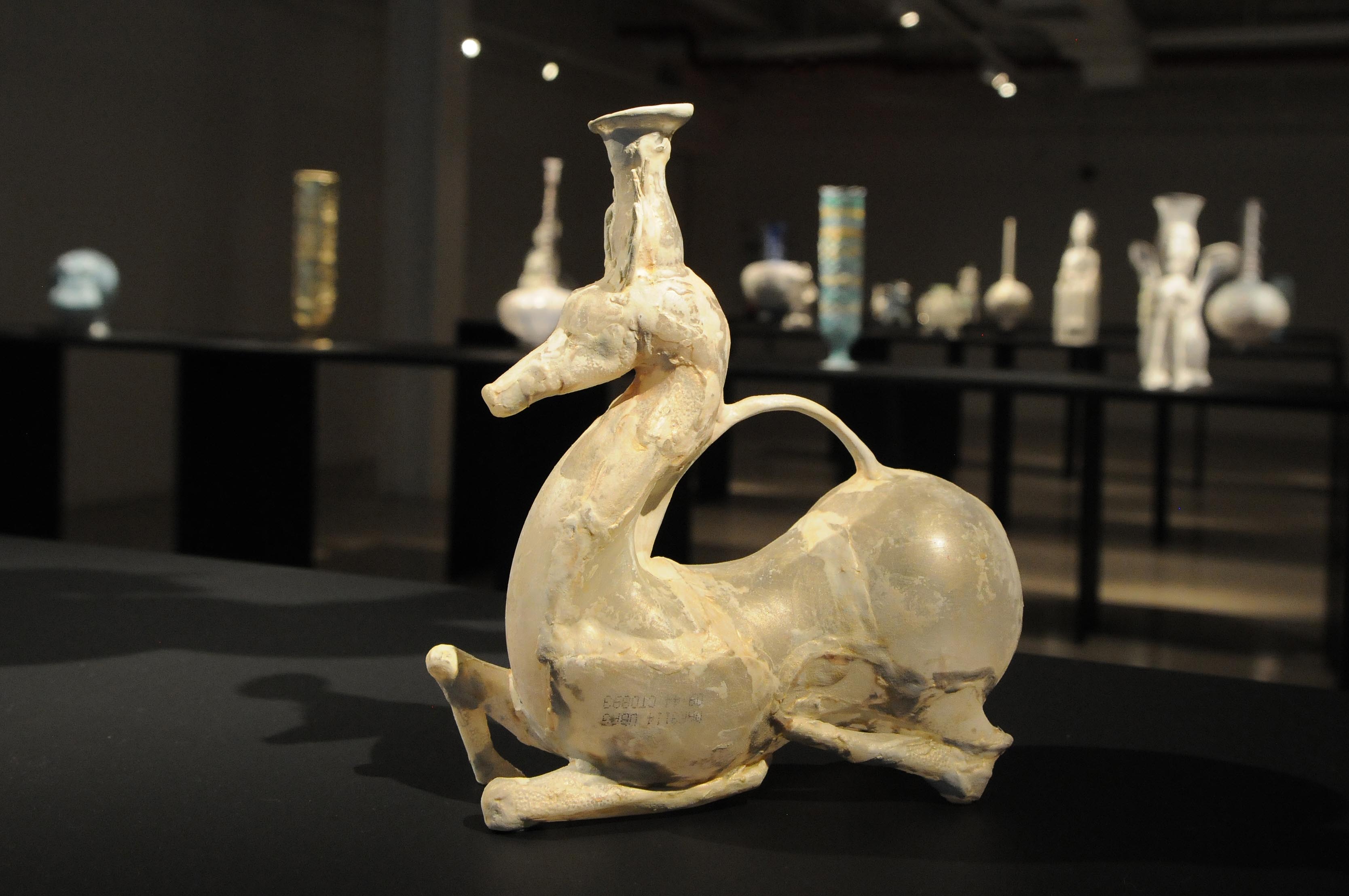
Deer Askos, 2018.
Mendelson draws her inspiration from ancient Roman and early Islamic objects. Like an archaeologist, she collects discarded artifacts of modern life around her neighborhood in Williamsburg, Brooklyn, manipulating her finds into glass-like vessels and figurines. Held together with hot glue and adorned with tea bags and glitter, the pieces take on a distinctly contemporary identity.
Relationships between past and present are emphasized in Glasslike by the inclusion of truly ancient glass objects, contrasting modern and ancient methods of production and materiality. Today, what we leave behind becomes fodder for new creation, while memories of ancient forms shape the appearance of contemporary works. Collectively, the evolution of industry is united across time and space.
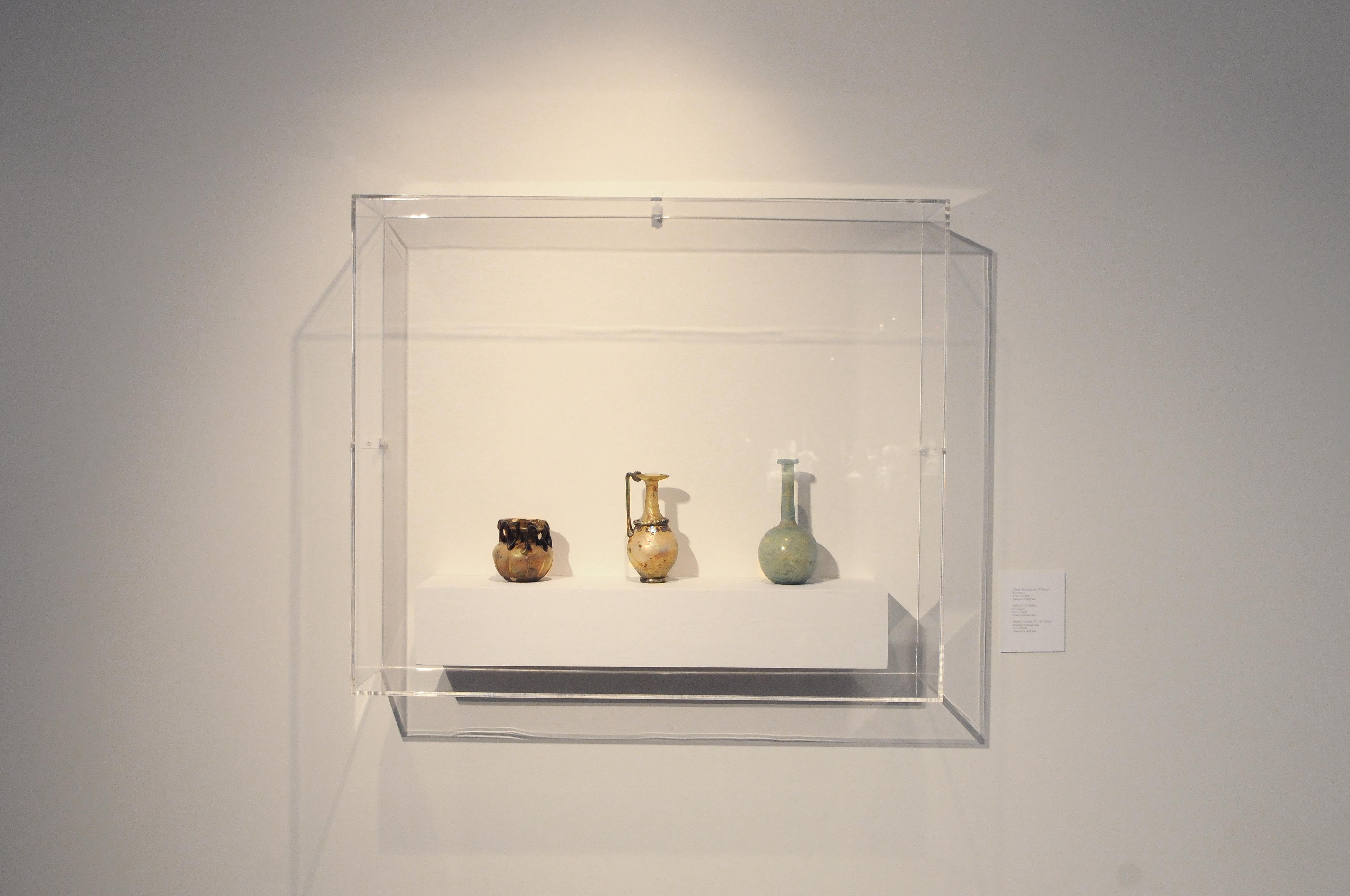
Ancient glass from the collection of Geoff Isles.
MODERN got a chance to speak with Essner about Glasslike, the place of Mendelson’s work in the history of design, and about future exhibitions at UrbanGlass.
Anna Talley/MODERN MAGAZINE: There is a curatorial trend right now of taking objects out of a strict chronology, and instead, creating dialogues with formal and conceptual elements. What does this add to the richness of the objects and the exhibition itself?
Elizabeth Essner: Shari Mendelson’s work interprets the objects of antiquity, especially ancient glass, into the modern medium of recycled plastic bottles. In Glasslike, the artist and I wanted to tell the story of her work by placing it in context with a key source, ancient glass. Thanks to lender Geoff Isles who has generously shared pieces from his incredible collection, we were able to offer viewers a very direct conversation about the past and the present. By linking ancient with modern, glass with plastic, the exhibition explores many ways to think through the term Glasslike.
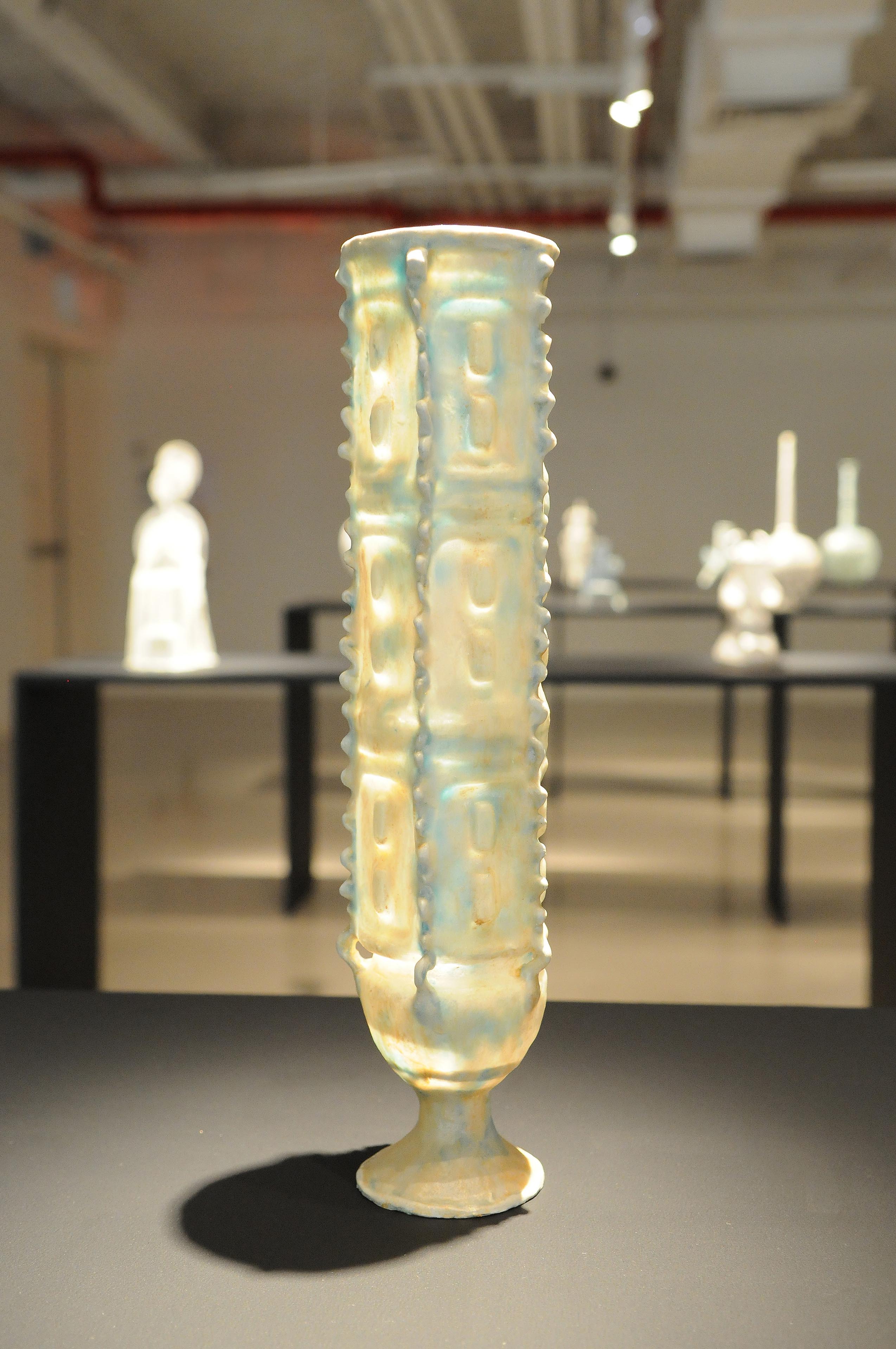
Small Gold Urn, 2018.
AT/MM: Why do you think, in this modern era, we are still drawn to ancient forms and customs in design?
EE: I think culture is always in dialogue with some form of the past, but I think our relationship to it shifts as the present changes. In times of great tumult, which perhaps we are in now, I think it’s natural to ask, “How exactly did we get here?” Mendelson’s work looks back to the beginnings of civilization—to the very foundations of who we are.
The past can sometimes be hard to imagine. But, when you see an iridescent glass jug from nearly two thousand years ago made of essentially the same material as we use today, it becomes a physical reminder that we are part of a larger continuum of time. Mendelson’s work very consciously explores this continuum, and by using recycled plastic—this modern, overabundant material as her medium—her work reframes the past and turns it into a conversation about the present.

Winged Horse with Cosmetic Tubes, 2015.
AT/MM: Do you think Mendelson’s work, with its use of repurposed materials, fits into the “eco-design” cohort?
EE: Mendelson is an artist, but her ideas certainly overlap with the thinking around “eco-design” and “up-cycling” as she reuses found or discarded materials in new ways. Her work has an archeological feel, but if you look closely you can see remnants of “sell-by” dates and drink logos that remain from their past lives as bottles. By reusing them, she’s directly engaging with contemporary issues of value, and in turn, our throwaway culture and the urgent environmental issue it has created.
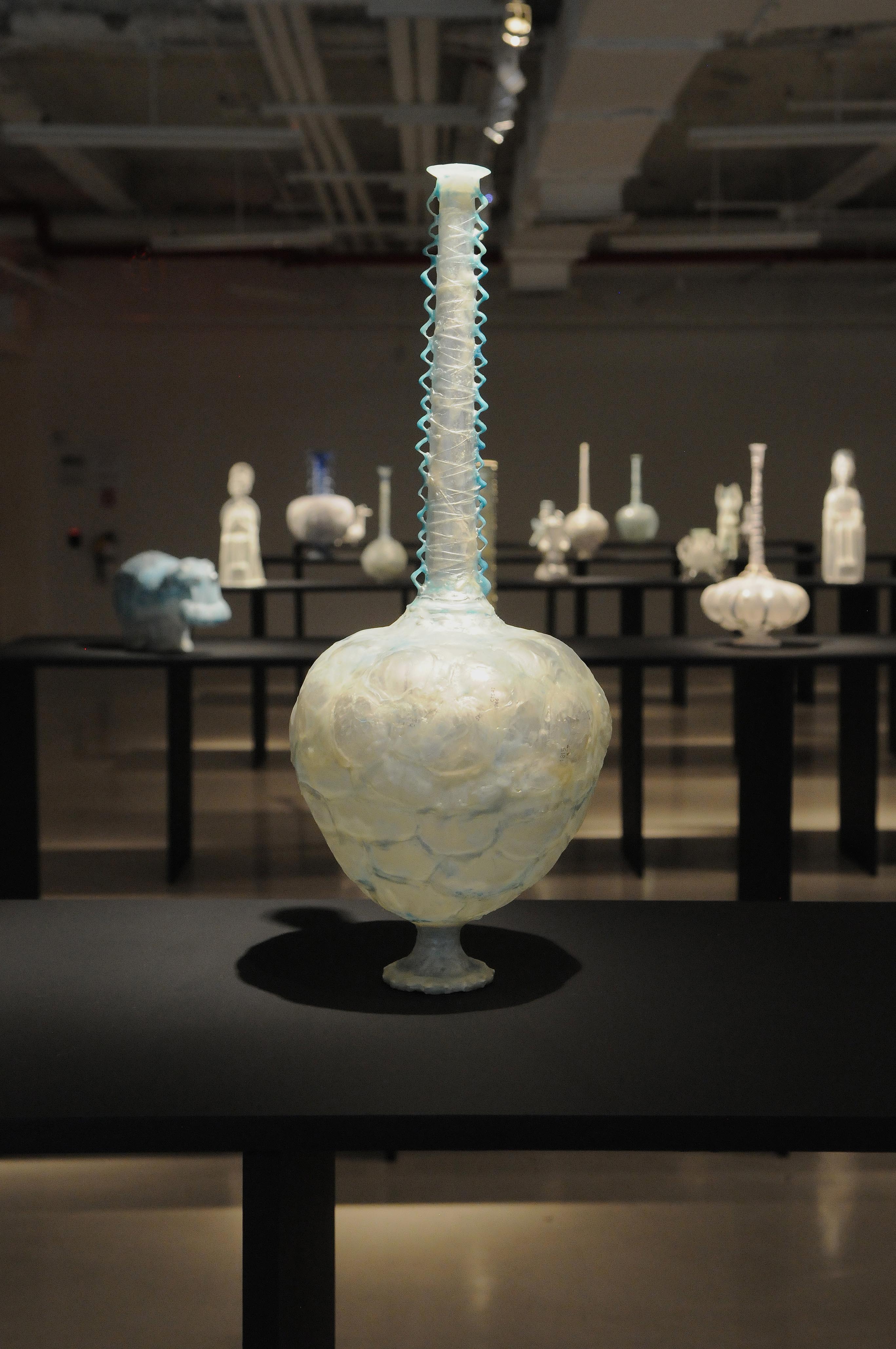
Vessel with Blue Zigzag, 2017.
AT/MM: What distinguishes Mendelson’s work between “design” and “sculpture?” Is there a division at all?
EE: Mendelson’s work responds to ancient objects that existed long before our formal definitions of design or sculpture. You could write a book on the complex divisions between the two today, but there are also intersections, and the vessel, one of Mendelson’s primary forms, is an interesting object to reflect on this. Vessels can be primarily functional objects—for instance, plastic bottles—but they can also be sources of deep artistic expression as you see in Glasslike. Mendelson is an artist, but interestingly, her own background includes training in design as she received her MFA in metalwork and jewelry.
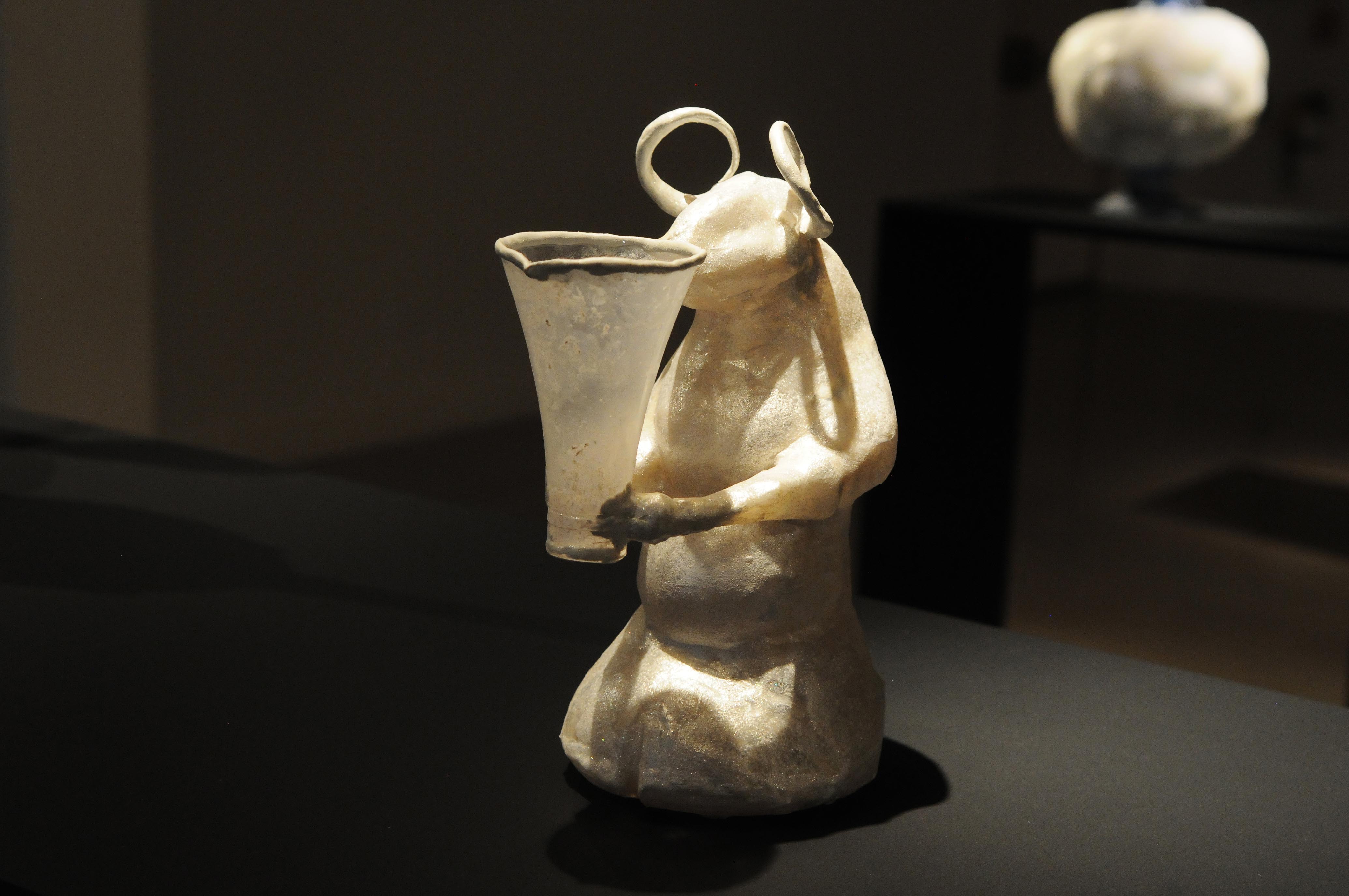
The Offering, 2018.
AT/MM: Does Mendelson’s work set the stage for more experimental “glasslike” exhibitions at UrbanGlass? If so, how?
EE: I hope so! UrbanGlass has a long and remarkable history of exploring not only all of the ways glass can be made (and there are many!) but also the meaning of glass. I think this where Glasslike fits in. Mendelson was a resident artist at UrbanGlass in 2014, part of an incredible program that links contemporary artists to glass—a material that requires enormous expertise and resources to create. They’ve recently developed a residency for designers as well. All of these residencies allow for new questions to be asked about the material, and new answers to be created.
Shari Mendelson: Glasslike is on view at UrbanGlass, until November 3, 2018.










